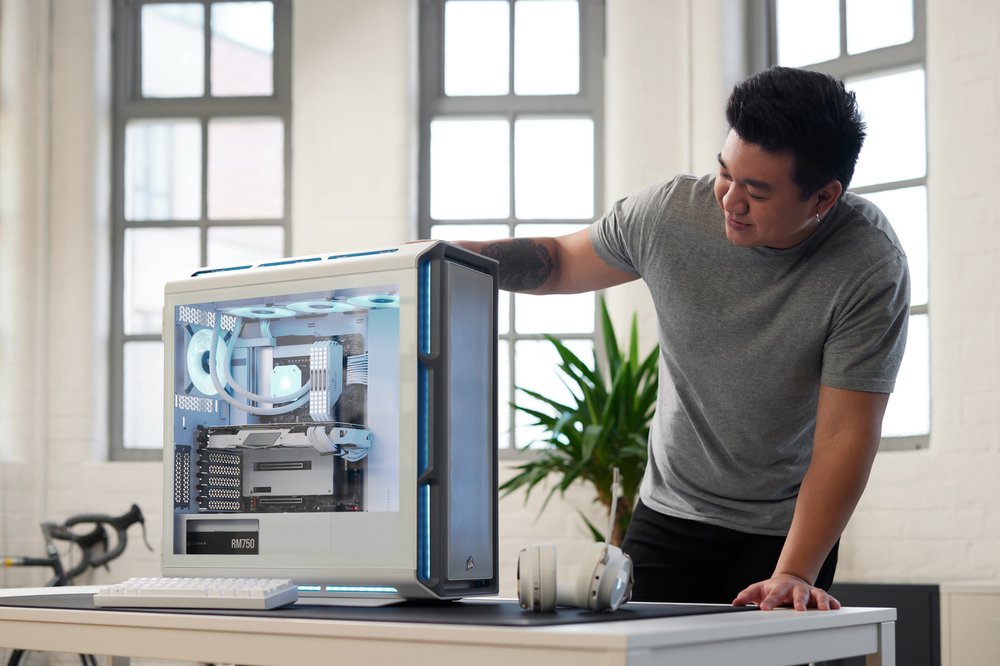Picking a PC case can be confusing at the best of times. It needs to be big enough, look good, easy to work in, and about 50 other things. So, in the first of a few lessons, we're going to break it down for you. We'll start with case sizes and layouts. Luckily, CORSAIR makes cases of all shapes and sizes, covering a wide range of budgets, too. So, we've got plenty of examples to use in this lesson.
Size is the first thing to consider when choosing a PC case.
It needs to fit the size of your motherboard and the rest of your components. It also influences your cooling, front I/O, and how much space you have left on your desk.
Case size standards don't always align with motherboard sizes, also known as form-factors. Mini-ITX (or small-form-factor), Micro-ATX, ATX, and E-ATX are industry-wide standards.
You should aim for large cases if you hope to improve airflow and cooling performance, and if you’re building a performance PC, don’t underestimate the size of new GPUs and whether they fit even in a “standard” mid-tower case.

Cases fall into a variety of sizes that support one or more motherboard sizes. Small-form-factor cases are usually limited to supporting small mini-ITX motherboards, while Mini or Small-Tower cases cater to micro-ATX motherboards. Mid-Tower cases are the most popular and are able to house larger ATX motherboards.
At a glance, the common terms describing case sizes are:
The larger the case, the more it can do for your component cooling due to lower concentration of hot spots and more fan and radiator space. A larger case is also easier to build in, and larger motherboards have more connections.
A small case is going to take up less room on your desk and some of the peak SFF builds are showcases of craftsmanship and almost works of art.
Graphics cards come in all shapes and sizes, but if you’re buying a new GPU, you’ll need to consider its size. Some AIB versions of NVIDIA® GeForce RTX™ 4090 are well over 32cm (13in) long, and will have trouble fitting into some mid-tower cases. Most Full-Tower ATX cases can house them, but anything smaller means you’ll need to check.
If you’re looking at smaller cases, you should also consider the size of the PSU. (We make PSUs of all sizes, by the way) PSUs come in many sizes, ranging from SFX (small) to SFX-L (small but a bit longer), regular ATX, and even larger. ATX PSUs are standardized in their height and width, but their lengths vary quite a bit. Check out our PC builder and see if your planned components will fit into your case.

CPUs and GPUs draw more power every year to improve on the competition and previous generations. Much has been said about the strain this puts on power supplies, but cooling is just as important.
With increased power draw comes increased heat generation, and if you want your components to deliver all the performance you paid for, make sure you have enough cooling power and case airflow in place.
Finally, choosing an AIO cooler with a large radiator provides better cooling performance than air coolers, because liquid has a higher heat capacity than air, and a radiator mounted on the side of the case blows heat out of the case rather than letting it gather inside.
PRODUCTS IN ARTICLE